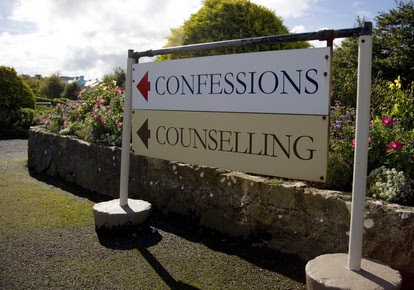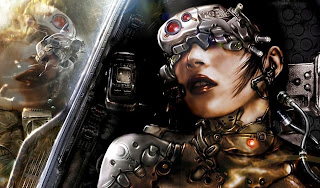·
Intro
Technology
has opened doors for us that we could never open before in our life! If
anything, it has made us closer. It gives us the ability to keep in touch with
our families, jobs, and friends. The internet used to be just emails and banner
ads. It quickly evolved to be something much bigger. We use to come home and
watch TV but now we watch TV on the internet. We search on the internet, read
blogs, upload pictures, and we update our statuses. We have come to share our
lives on the internet. We’re not on the internet as passive observers. We’re on
the internet to have a shared experience.
·
What
is Web 2.0, and how has the shift in digital culture
We
are in a time where technologies make it easier for ordinary people to take
media into their own hands. They are able to create, share, and express
themselves in every possible media channel. Examples include fan communities,
groups of gamers, blogging population, and various subcultures online. What these
groups have in common is that they have environments that are supportive in
which to create and share what you create with others that there is a real
respect for the creative process and there is an assumption that whoever is a
reader can become a writer and whoever is a consumer can just become a
producer.
Web
2.0 describes a new version to the world wide web. It is sites such as YouTube
or Facebook that allow users to connect and interact with as producers or
creators of content in a digital world. Web 2.0 is removes the barriers that
older Web sites had that limited users to easy access to user-generated
content.
A
great example that has embraced Web 2.0 would be Geni, a genealogy and social
networking website. I became familiar with this site last year when I was
searching my family tree and Geni was the most helpful. Like Facebook, it aims
to connect people. However, unlike Facebook, Geni seeks to connect families
with a shared family tree of common ancestors. It is fairly simple to use with
tips every step of the way. People lives have become busier with very little
time to waste. Sites, such as this, are becoming popular because they have
evolved with peoples busy schedules. It has evolved to compliment man’s desire
to connect and produce their own content.
·
How
has it empowered ordinary people to become media producers and distributors?
This
is what Web 2.0 is also about participatory culture and spreadable media. Participatory
culture is a term that refers to a culture of people that do not act as
consumers only, but also as contributors or producers. Henry Jenkins added that
the key elements of participatory culture include low barriers to
participation, strong support for sharing, informal mentorship, members who
feel that their contributions matter, and who cares about others'
participation. Participatory cultures reward participation. Not everyone must
participate, but everyone must believe that if they participate it will be
valued.
Web
2.0 has allowed for people to take to social media and share their skills with
the world and help contribute to produsage. Sites such YouTube allow people share their
skills with world. It displays a wide variety of independent videos. This
included “Hollywood” movie clips, television show clips, music videos, a wide
variety of amateur created videos such as video blogging “vlogging”, short
original videos, and educational videos. YouTube can define as “user-friendly.”
From your casual viewers, to your independent producers anyone can use YouTube.
With this access to an easy interface, many users have taken to this site as
there way of expressing themselves.
Produsage
is best described through the examples that the web has produced over the
years. A good example would be the rap artist “Souja Boy.” The young artist
decided to make a catchy song and dance and uploaded it to YouTube. There it
spread like wild fire, make Souja Boy famous within hours. He allowed people to
take the video and make their own dance videos and share them without any
compensation. This made him a conduit of produsage in which people took his
work and produced their own version.
 Another
example would be Rooster Teeth’s Red vs. Blue. Red vs. Blue is probably the first web series
and first video I ever watched on YouTube itself. Red vs. Blue is a comedic
parody series based on the Halo video game franchise, created by Rooster Teeth
Productions. Red vs. Blue was created by using voice-over and prerecorded
gameplay videos of on the Microsoft Xbox and Xbox 360. The series followed the
Machinima techniques of other videos seen by using synchronizing video footage
from a game to pre-recorded dialogue and other audio.
Another
example would be Rooster Teeth’s Red vs. Blue. Red vs. Blue is probably the first web series
and first video I ever watched on YouTube itself. Red vs. Blue is a comedic
parody series based on the Halo video game franchise, created by Rooster Teeth
Productions. Red vs. Blue was created by using voice-over and prerecorded
gameplay videos of on the Microsoft Xbox and Xbox 360. The series followed the
Machinima techniques of other videos seen by using synchronizing video footage
from a game to pre-recorded dialogue and other audio.
Series
did so well that seasonal DVDs were released due such a high demand for them.
Initially the series intended to be very short; the project quickly and
unexpectedly achieved significant popularity following its Internet release on
April 1, 2003. Praised for its originality, the series has won four awards at
film festivals held by the Academy of Machinima Arts & Sciences. It has also
won the award from "Best Animated Web Series" from the International
Academy of Web Television. The series was credited with bringing new popularity
to the YouTube channel “machinima,” helping it to gain more mainstream
exposure, and influencing more people create their own videos that matched this
art form.
·
How
it has this affected many of the media industries?
For
years, newspapers have been one of Americas’ primary sources of global,
national, and local news. We rely on them for the information that we needed to
understand what is happening in our world. But today, newspapers across the
country, including in the north east region, are in crisis. Declining
circulation and advertising revenue have led to staff cuts, less content, and
even bankruptcy, putting in question the ability of the newspaper industry to
continue providing vital information to the public.
It’s
no secret that journalism has had to step down from the pedestal it was once
on. In a way this descent has been, in part, a result of its own doing and in
part because it has failed to keep up with the times. While technology has
progressed, journalism has to a certain extent been unable to re-invent itself
in the digital sphere and has simultaneously been unable to sustain itself in
the analog sphere.
Journalism
is being given tough competition by sites such as Twitter and Facebook, where
traditional forms of news reporting do not matter anymore. What traditional
media outlets can't do anymore, is cover breaking news. That is one of the
fundamental problems facing journalism today. With reporting become by the
second as opposed to daily, consumer’s habits have changed and unfortunately
newspapers haven’t been able to keep up. But we are forgetting that there's a
difference between information and knowledge, If a bomb goes off in
Afghanistan, people can read about it instantly on Twitter but they won't be
able to know what it means. Where did it come from? Who did it? What's
happening over there? That is what journalism can do. There is no doubt about
it, Facebook and Twitter are now pathways to news, but their role may not be as
large as some have suggested. The population that uses these networks for news
at all is still relatively small, especially the part that does so very often.
Moreover, these social media news consumers have not given up other methods of
getting news, such going directly to websites, using apps or through search. In
other words, social media are additional paths to news, not replacements for
more traditional ones.
Like
what was stated previously, Facebook and Twitter have become new pathways to
news. People have been relying in these social media sites for their news,
family updates, weather reports, and place they can share everything. Public relation jobs and industries have also
adopted this form of news spreading. Being a public affairs officer myself for
a non-profit organization, I know full well how social media plays an important
role. Social media has become a tool to use to reach out to modern people
today. It has become a way for big organization, such as Taco Bell, to directly
communicate to its customers and relating to them. This creates a new form of
marketing and brings in more trusting customers.
·
Conclusion
In
my conclusion, Web 2.0 is only the beginning of a new shift in digital culture.
You can easily see as time goes on, technology will advance which will change
the way we receive our information and entertainment. With social media sites
such as YouTube, Facebook, and Twitter, people can connect and share themselves
more than ever before. I, personally, look forward to the future of Web 2.0 and
the frontiers it will take mankind.
Work
Cited
·
Christian, A. (2012, 11 11). Youtube’s fading
‘halo’. Retrieved from http://tvisual.org/2012/11/11/youtubes-fading-halo/
·
Informa Telecoms and Media. (2012, 03 30).
Machinima to launch prime, prepares for first youtube ‘upfront’. Retrieved from
http://www.digitaltveurope.net/22678/machinima-to-launch-prime-prepares-for-first-youtube-upfront/
·
Klowden, K. (2008, 06). Writers’ strike of
2007–2008 the economic impact of digital distribution. Retrieved from http://www.milkeninstitute.org/pdf/writers_strike.pdf
·
Jenkins, Henry. Fans, bloggers, and gamers:
exploring participatory culture. New York: New York University Press, 2006.
Print.
·
Rose, Frank . "Deep Media." 'Deep
Media'. Frank Rose , n.d. Web. 3 Dec. 2013.
<http://www.deepmediaonline.com/deepmedia/2013/01/henry-jenkins-on-spreadable-media.html>.



































